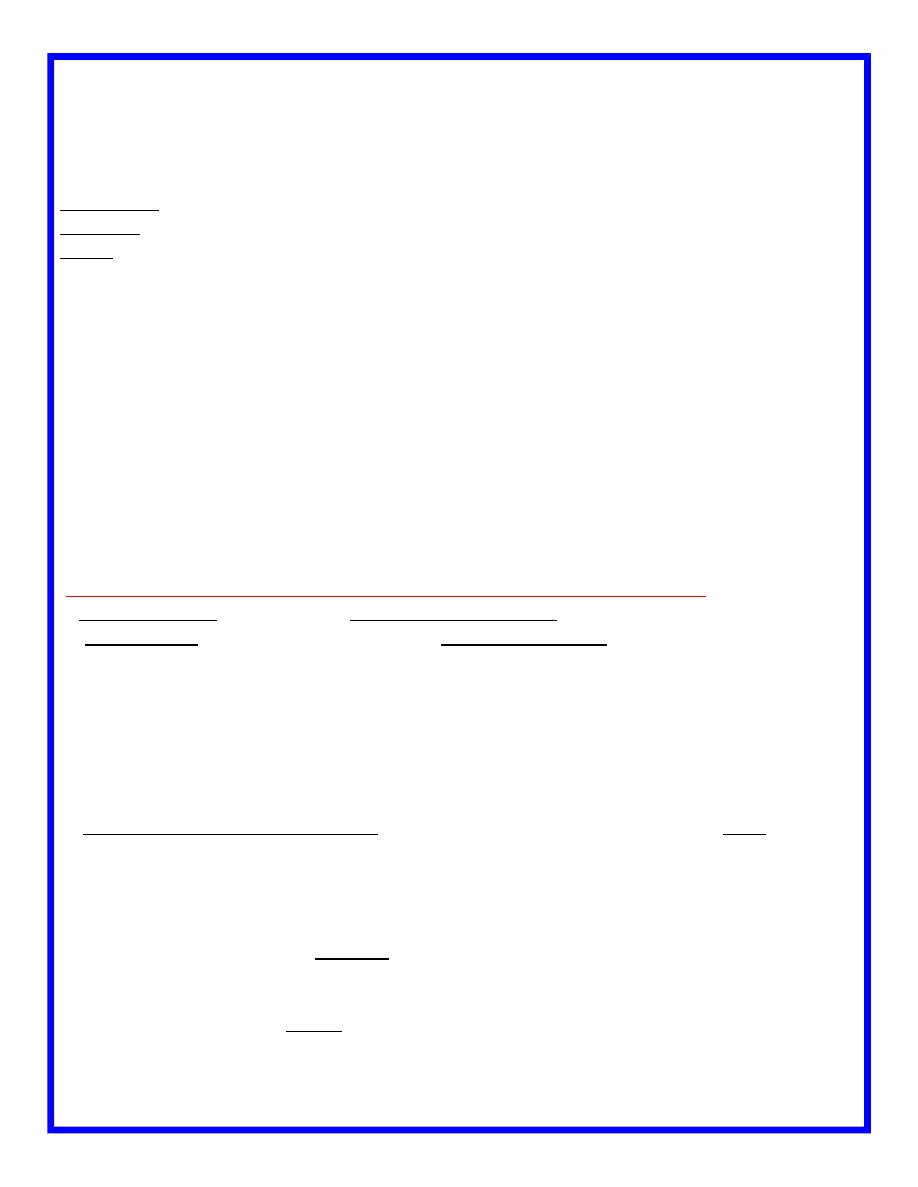
1
Small intestine
Dr.Fakharaldeen
Anatomy;- the small intestine is divided into three structural parts: ..
Duodenum 26 cm (9.8 in) in length
Jejunum 2.5 m (8.2 ft)
Ileum 3.5 m (11.5 ft)
Histology.
Physiology.
DIVERTICULAR DISEASE
Can occur from stomach to the recto sigmoid.
Two varieties;
l-congenital=aII three coats of bowel are present in the wall of the ‘‘Meckel‘s
diverticulum's.
2-Acquired=the wall of the diverticulum’s lacks a proper muscular coat.
Most of GIT diverticulum’s are of acquired type.
Most of the small bowel diverticulae arise from the mesenteric side of the bowel
(mucosal herniation through the point of entry of blood vessels). Treatment;-
Treatment is generally surgery.
Diagnosis;-
1-barium x-rays of the upper gastrointestinal tract.
2- Endoscopy or, less frequently, with ultrasonography.
DUODENAL DIVE RTICULUM ;-Types;-
1- primary; occur in elderly, in the inner wall of 2nd &3rd parts found
incidentally on barium usually asymptomatic but cause problems locating the
amplilla during (ERCP).
2-secondary; occur in the duodenal cup due to long standing duodenal
ulceration.
3- computerized tomographic scans (CT) or magnetic resonance imaging (MRI) studies
of the abdomen.
Complications of duodenal diverticulum
1-Extramural diverticula usually cause no symptoms.
2-Occasionally, they may rupture (just like colonic diverticula) and lead to a
pocket of inflammation adjacent to the duodenum with or without infection.
This may result in all the signs and symptoms of intra-abdominal
inflammation pain, fever, and abdominal tenderness.
3- Intramural duodenal diverticula most commonly cause obstruction of the
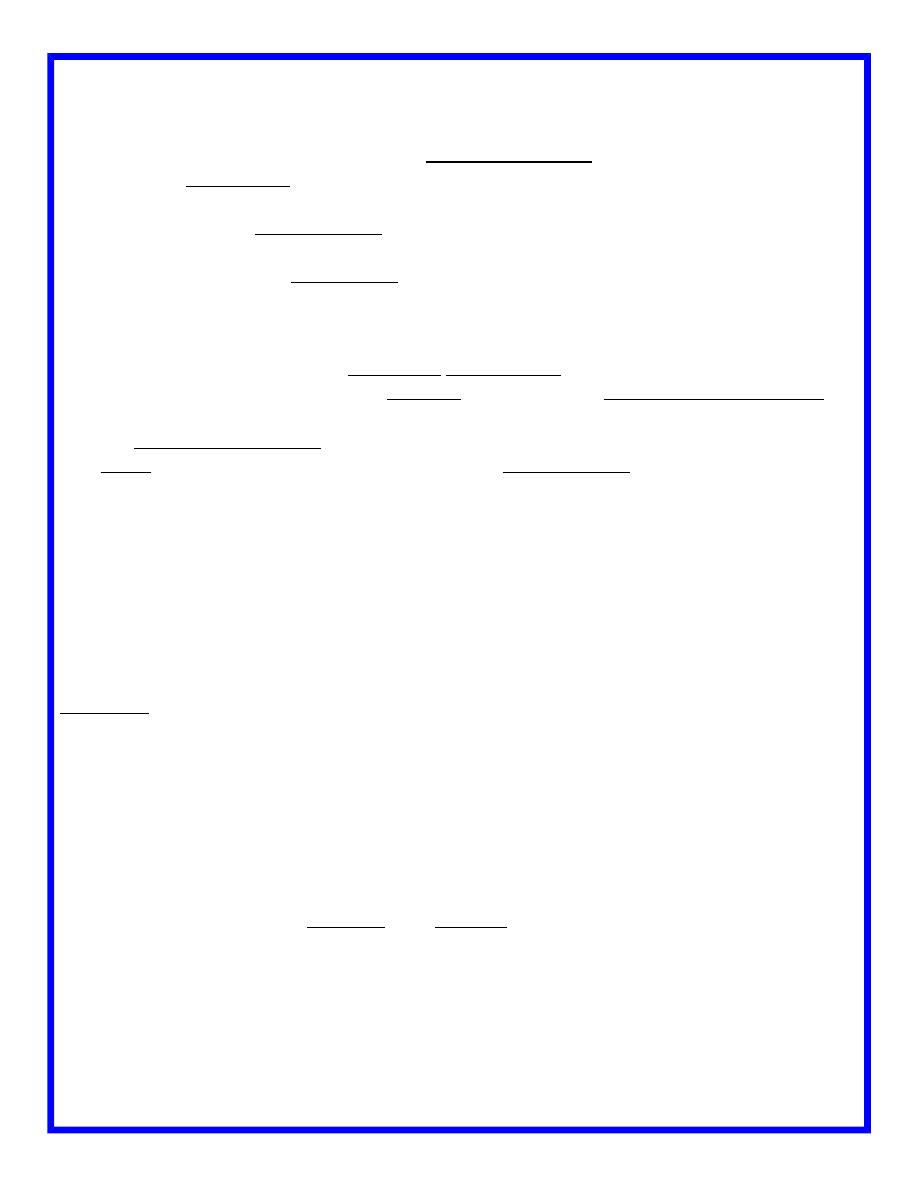
2
duodenum when the diverticulum fills with ingested material.If the
diverticulum is very close to the Ampulla of Vater, patients more frequently
develop gallstones, particularly in the bile ducts, and may develop all the
complications of gallstones: biliary colic (the typical pain of obstruction of
the bile ducts), cholecystitis (inflammation of the gallbladder), and
cholangitis (inflammation of the bile ducts due to the spread of bacteria into the ducts
from the duodenum).Pancreatitis also may occur.
Treatment is surgical removal (operative or laparoscopic).
Meckel's Diverticulum
A Meckel's diverticulum, a true congenital diverticulum, is a small bulge in the small
intestine present at birth. It is a vestigial remnant of the omphalomesenteric duct
(also called the vitelline duct or yolk stalk), and is the most frequent malformation of
the gastrointestinal tract. Meckel's diverticulum is usually located in the distal
ileum, usually within about 60-100 cm of the ileocecal valve. It is typically 3-5 cm
long, runs antimesenterically and has its own blood supply.
It is a remnant of the connection from the yolk-sac to the small intestine present during
embryonic development.
A memory aid is the rule of 2's:
2% (of the population) - 2 feet (from the ileocecal valve) - 2 inches (in length) - 2% are
symptomatic, there are 2 types of common ectopic tissue (gastric and pancreatic),
the most common age at clinical presentation is 2, and males are 2 times as likely to
be affected.
Silent MD= during abdominal operation provided it is wide—mouthed and the wall not
feel thickened it can be left. When there is doubt and it can be removed without
appreciable additional risk, it should be removed.
It can also be present as an indirect hernia, typically on the right side, where it is known
as a "Hernia of Littre.“
It can be attached to the umbilical region by the vitelline ligament, with the possibility of
vitelline cysts, or even a patent vitelline canal forming a vitelline fistula when the
umbilical cord is cut. Torsions of intestine around the intestinal stalk may also occur,
leading to obstruction, ischemia, and necrosis.
Complications ( occur more in males);—
1-sever hemorrhage, caused by peptic ulceration.
2-Intussusception .the apex of intussusception is the swollen inflamed heterotopic
epithelium.
3-Meckel’s diverticulitis with or without perforation as (acute appendicitis or
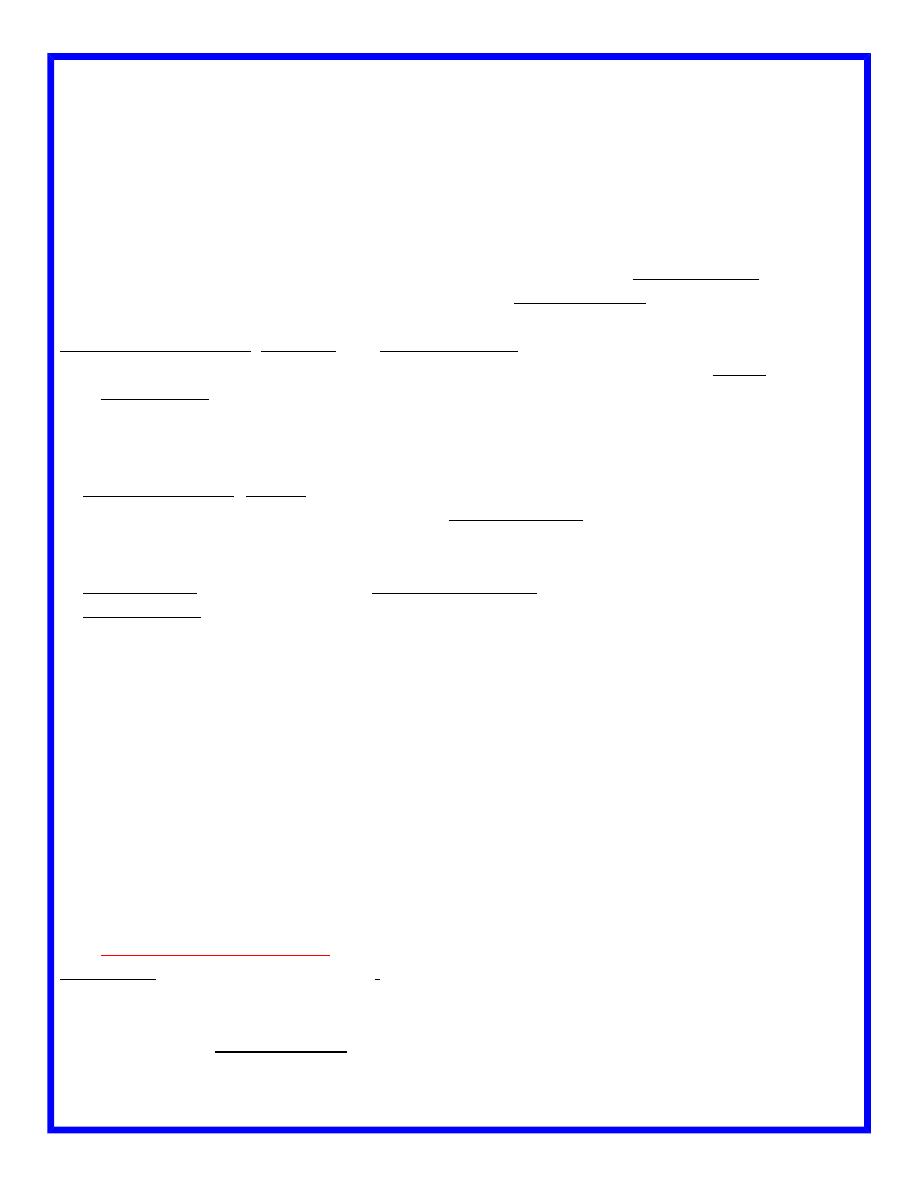
3
perforated duodenal ulcers).
4-Chronic peptic ulceration.
5-Intestinal obstruction (band between the apex of the diverticulum and umbilicus
or by a volvulus around it).
Symptoms
The majority of people afflicted with Meckel's diverticulum are asymptomatic.
The most common presenting symptom is painless rectal bleeding. Most of the time,
bleeding occurs without warning and stops spontaneously.
intestinal obstruction, volvulus and intussusception.
Occasionally, Meckel's diverticulitis may present with all the features of acute
appendicitis. Also, severe pain in the upper abdomen is experienced by the patient
along with bloating of the stomach region. At times, the symptoms are so painful
such that they may cause sleepless nights with extreme pain in the abdominal area.
Diagnosis
1- Technetium-99m (99mTc) pertechnetate scan is the investigation of choice to diagnose
Meckel's diverticula. This scan detects gastric mucosa; since approximately 50% of
symptomatic Meckel's diverticula have ectopic gastric or pancreatic cells contained
within them,
2- Colonoscopy and screenings for bleeding disorders should be performed, and
3- Angiography can assist in determining the location and severity of bleeding. Meckel's
occurs more often in males than females.
Treatment
Treatment is surgical. SURGICAL PROCEDURES; by using linear stapler.
1-Meckel’s diverticulectomy for (narrow -mouth +thick wall).
2-Resection of short segment and end-to-end anastomosis.
In patients with bleeding, strangulation of bowel, bowel perforation or bowel
obstruction, treatment involves surgical resection of both the Meckel's diverticulum
itself along with the adjacent bowel segment.
In patients without any of the mentioned complications, treatment involves surgical
resection of the Meckel's diverticulum only.
It is generally not indicated to remove Meckel's diverticula found incidentally during
surgery for other reasons .
INFECTIONS;
Typhoid and paratyphoid
*clinically ;- feco-oral transmission,history of fever ,abdominal pain ,anorexia and
sometimes diarrhea containing blood. Their may be enlargement of liver and spleen
by abdominal examination “doughy abdominal palpation”.
Pathology;-*Typhoid ulcer; - usually occur in the lower ileum and it is parallel to the

1
long axis of the gut, this ulcer may perforate in the 3rd week and is occasionally the
first sign of the disease.
* Paratyphoid B; usually affect the large intestine and may cause perforation and
peritonitis…..
Diagnosis;-
1-history and clinical examination.
2-blood exam, CBC, Widal test, blood culture…. GUE
3-stool exam, and culture.
complications of the typhoid & paratyphoid,
*abdominal pain & perforation with peritonitis.‘paralytic ileus is the most common
complication of the typhoid’.
*Intestinal hemorrhage may be the leading symptom.
*cholecystitis (gall stone contain typhoid bacilli=typhoid carriers).
*phlebitis; venous thrombosis (left common iliac vein).
*genitourinary (cystitis, pyelitis & epididymo-orchitis)
*joints; arthritis (effusion ---suppuration).
*Bone; osteomylitis and typhoid of spine.
treatment; antibiotic and occasionally surgery for surgical complications
(defunctioning colostomy or colectomy in late cases).
TUBERCULOSIS OF THE INTESTINE
TB affect any part of GIT, commonly ileum, proximal colon & peritoneum.
Symptoms ;-
Fever
Weight loss
Abdominal Pain
Diarrhea
Signs
Blood in stool.
Palpable right lower quadrant mass.
Two types;
1-Ulcerat
ive TB; occur secondary to pulmonary TB(swallowing TB
bacilli),causing multiple ulceration in the terminal ileum, lying transversely and
overlying serosa is thickened, reddened & covered by tubercles.
*clinically; history of diarrhea & weight loss in patient become well after
receiving treatment for pulmonary TB.
2-Hyperplastic TB; occur in the ileocaecal region (can be solitary & multiple
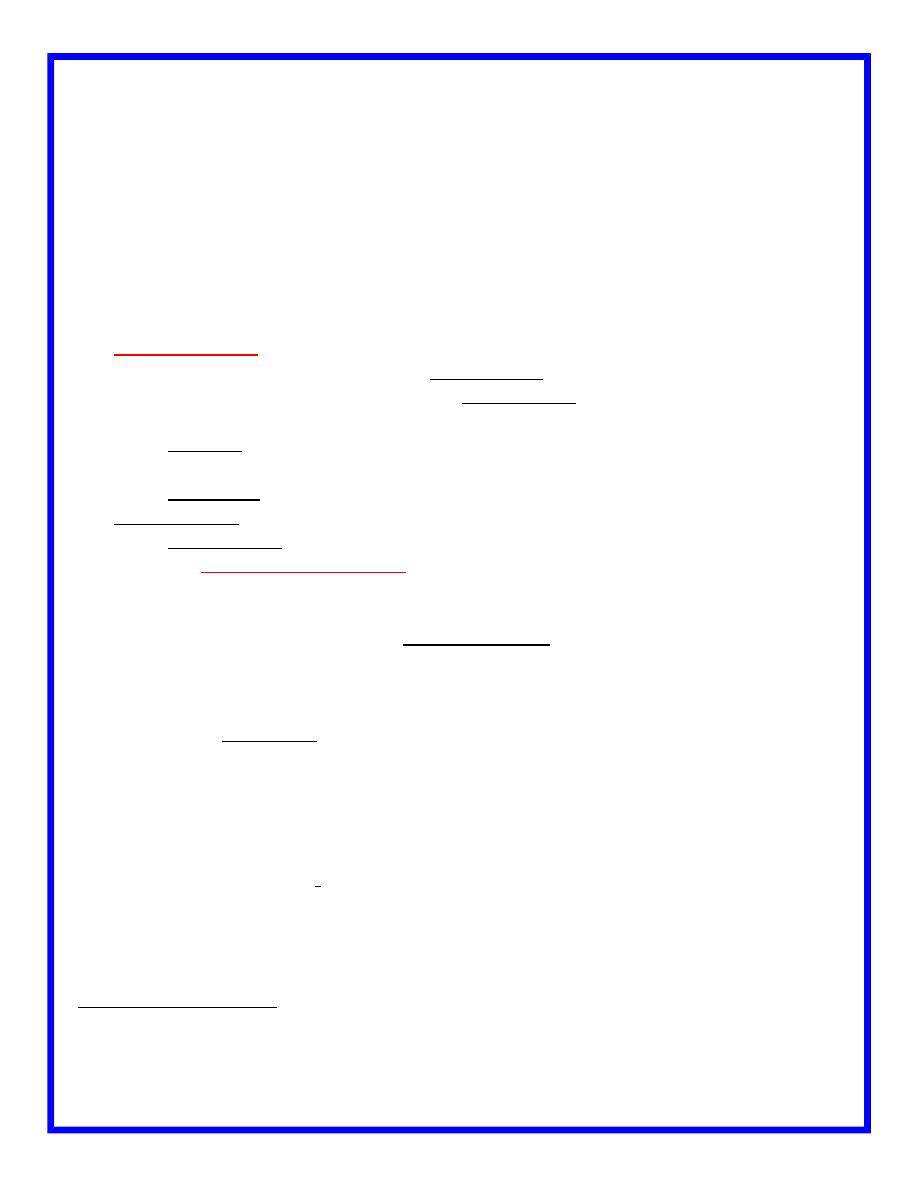
2
lesion), caused by ingestion of Mycobacterium TB which establish itself to the
lymphoid follicles and resulting in chronic inflammation (thickening and
narrowing of the intestine).
The regional lymph nodes may caseate.
Abscess & fistulae formation are rare.
Untreated cases cause sub acute intestinal obstruction.
Clinically; *abdominal pain with intermittent diarrhea.
*steatorrhea, anemia & weight loss.
Differential Diagnosis
Crohn's Disease
Critical to differentiate from Tuberculosis
Crohn's Treatment disseminates Tuberculosis
Infection
Yersinia
Actinomyces
Amebiasis
Colon Cancer
Diagnosis;-
1-* radiological findings
;( barium meal &follow through or small
bowel enema) =absence of filling of the lower ileum, cecum & most
of the ascending colon as a result of narrowing & hyper motility of
the ulcerated segment. Barium Enema Shortened and retracted
cecum
2-Endoscopy
Mucosal injury
Ulcerations
Hypertrophic lesions
Dense bandlike fibrosis
Mucosal biopsy shows Acid Fast Bacilli (low yield)
Culture of biopsy specimens
3-CT of the Abdomen.
Management;
*chemotherapy (anti - TB drugs for six months).
*rarely surgical operation if complication (perforation or
intestinal obstruction).
Complications;-
1-Intestinal Obstruction Dense bandlike fibrosis.
2-Bowel perforation and peritonitis.
3-Enteric fistulas .

3
ACTINOMYCOSIS OF THE ILEOCECAL REGION
Rare condition as a small local abscess spread to the retroperitoneal tissue &
adjacent abdominal wall, forming seats of multiple indurated discharging sinuses.
The liver may involve via portal vein. Clinically;
*history of appendectomy? Three weeks after surgery=palpable mass in RIF +
discharge of thin &watery later become thicker & malodorous, secondary fecal
fistula may develop.
*bacteriological exam. Of the pus= sulphur granules.
Treatment; penicillin or co-trimoxazoic (high dose for long period).
CROHN’S DISEASE (REGIONAL ENTERITIS)
Chronic inflammatory disease of the ileurn. it can affect any part of the GIT from the
lips to the anal canal, but ileocolonic (ileocecal) disease is the most common.
it is most common in north America & northern Europe. more in women (25—40 years).
Etiology
No causative organism , but focal ischemia (vasculitis with immunological process
cell-mediated) .
Smoking has 3 times risk.
In about 10% first-degree relative with (ankylosing spodylitis).
Pathology;-
Site;-60% in the ileum 30% in the large intestine .
*pathology;-mulifocal arterial occlusions in the muscularis propria. ‘fibrotic
thickening of the intestinal wall with a narrow
lumin(stricture formation) and a proximal dilatation.
*earIy changes;- discrete mucosal aphthous ulcers later cause deep mucosal
ulceration (linear or snake—like pattern).
*cobble-stone appearance (mucosal edema between the ulcers).
*transmural inflammation (adhesions ,inflammatory masses with mesenteric abscess
&fistulae into adjacent organs).
*serosa (opaque +thickening of the mesentry and mesenteric lymph nodes
enlargement)
*skip lesion (discontinuos condition=inflamed area separated from normal area).
*Non_caseating giant cell granuloma in 60%.
*Anorectal lesions are common.
Clinical -presentations depend on the site & severity of involvement.
A-ACUTE CD; 5% of cases.

4
*sign & symptoms of acute appendicitis with diarrhea preceding the
attack.
*rarely free perforation —local or diffuse peritonitis.
*Acute colitis with toxic mega-colon occur less than that with UC “ulcerative
colitis”.
B-CHRONIC CD; 95% of cases.
*chronic diarrhea over many months with intestinal colic.
* pain in the right iliac fossa & their may be palpable tender mass.
*intermittent fever, secondary anemia with weight loss are common.
*perianal abscess or fissures (infected anal crypts) and fistulae formation.
*after months =narrowing &fibrosis causes abdominal pain on eating “food fear”.
*children retardation of growth & sexual development.
*fistula formation (enteroenteric ,enterovesical ,enterocutaneous).
Symptoms;- The most common symptoms are pain and tenderness in the abdomen,
especially the lower right side and diarrhea. The symptoms of Crohn's disease may
be mild or severe. And they often come and go.
Other less frequent signs of CD include:
constipation
weight loss .
rectal bleeding
low grade fever
low levels of iron in the blood (anemia)
exhaustion
slowed growth and delayed sexual development in childhood cases
Diagnosis of Crohn’s disease;-
1-history & physical examination.
2-Blood tests may be done to check for anemia, high white blood cell count,
which is a sign of inflammation
3- stool exam., bleeding or infection in the intestines.
4-upper GI series to look at the small intestine Small Bowel Follow-Through:
Barium shows up on x-rays. Barium Enema:
The barium shows up, revealing inflammation or other abnormalities in the
intestine( partial obstruction ,string sign of Kantor if terminal ileum is involved).
5- sinogram ;- if enterocutaneous fistula is suspected.
6- Sigmoidoscopy or a colonoscopy. = inflammation or bleeding also do a
biopsy, which involves taking a sample of tissue from the lining of the
intestine to view with a microscope.

5
7-CT-scan for intra-abdominal mass, abscess, MRI –for perianal lesions.
complications of Crohn’s disease;-
1-The most common complication is intestinal obstruction. Occurs because the
disease tends to thicken the intestinal wall with swelling and scar tissue,
narrowing the passage.
2-Crohn’s disease may also cause sores, or ulcers, that tunnel through the
affected area into surrounding tissues, such as the bladder, vagina, or skin.
The areas around the anus and rectum are often involved. The
tunnels, called fistulas, are a common complication and often become
infected. Sometimes fistulas can be treated with medicine, but in some
cases they may require surgery. In addition to fistulas, small tears called
fissures may develop in the lining of the mucus membrane of the anus.
3-Nutritional complications ;-Deficiencies of proteins, calories, and vitamins. These
deficiencies may be caused by inadequate dietary intake, intestinal loss of protein, or
poor absorption as malabsorption.
4- CD can cause a number of problems outside of the digestive system including:
joint pain or arthritis,
inflammation in the eye and mouth,
gallstones,
several liver diseases,
skin rashes,
low level of iron in the blood or anemia, and
Kidney stones.
Some of these problems resolve during treatment for disease in the
digestive system, but some must be treated separately
treatment for Crohn’s disease;-
The goals of treatment are to control inflammation, correct nutritional deficiencies, and
relieve symptoms like abdominal pain, diarrhea, and rectal bleeding. treatment can
help control the disease by lowering the number of times a person experiences a
recurrence, but there is no cure. Treatment for Crohn’s disease depends on the
location and severity of disease, complications, and the person’s response to previous
medical treatments when treated for recurring symptoms. Someone with Crohn’s
disease may need medical care for a long time, with regular doctor visits to monitor
the condition.
1-Drug Therapy
1-Anti-Inflammation Drugs. Most people are first treated with drugs containing
mesalamine, a substance that helps control inflammation. Sulfasalazine is the most
commonly used of these drugs. Patients who do not benefit from it or who cannot
tolerate it may be put on other mesalamine-containing drugs, generally known as 5-

6
ASA agents, such as Asacol, Dipentum, or Pentasa.
2- steroids—provide very effective results. Prednisone 40 mg/day.
3- Immunosuppressive agents work by blocking the immune reaction that contributes to
inflammation (6-mercaptopurine, azathioprine).
4-Infliximab (murine chimeric monoclonal antibody), This drug blocks the body’s
inflammation response. 5-Antibiotics to
treat bacterial overgrowth in the small intestine caused by stricture, abscess, fistulas,
or prior surgery.
6-Anti-Diarrheal and Fluid Replacements. Diarrhea and crampy abdominal pain are
often relieved when the inflammation subsides, Patients who are dehydrated because
of diarrhea will be treated with fluids and electrolytes.
Nutrition Supplementation
* Special high-calorie liquid formulas are sometimes used.
* A small number of patients may need to be fed intravenously “TPN” through a
small tube inserted into the vein of the arm.
*correction of anemia is vital.
* People should take vitamin supplements only on their doctor’s advice.
Surgery;
- About 75 % of people with CD need surgery at some point in their life. After
surgery, some people are able to stop taking daily medicines for CD.
Surgery can help relieve the symptoms of CD but cannot cure it. The inflammation tends
to return next to the part of intestine that was removed. So, people considering
surgery for CD should carefully weigh the risks and benefits.
indications=
1- To relieve symptoms that does not respond to medical therapy.
2-Correct complications such as obstruction, perforation, abscess, or bleeding in the
intestine.
Types of surgery for CD include:
1-Stricturoplasty; - opens up an area of the intestine that has gotten smaller because of
CD. The area of the intestine that has narrowed is called a stricture. DO not remove
any of the intestines in this surgery.
2-Small bowel resection; - the damaged part of the intestine is removed and the two
healthy ends are sewn back together.
3-Colectomy, removes a part of the colon or the entire colon and rectum. Then
create a new way for waste to leave the body( a stoma). This hole allows for
the drainage of stool from the large or small intestine.
TOMOURS OF THE SMALL INTESTINE;
Usually rare Males have 25% more likeliness to develop the disease.
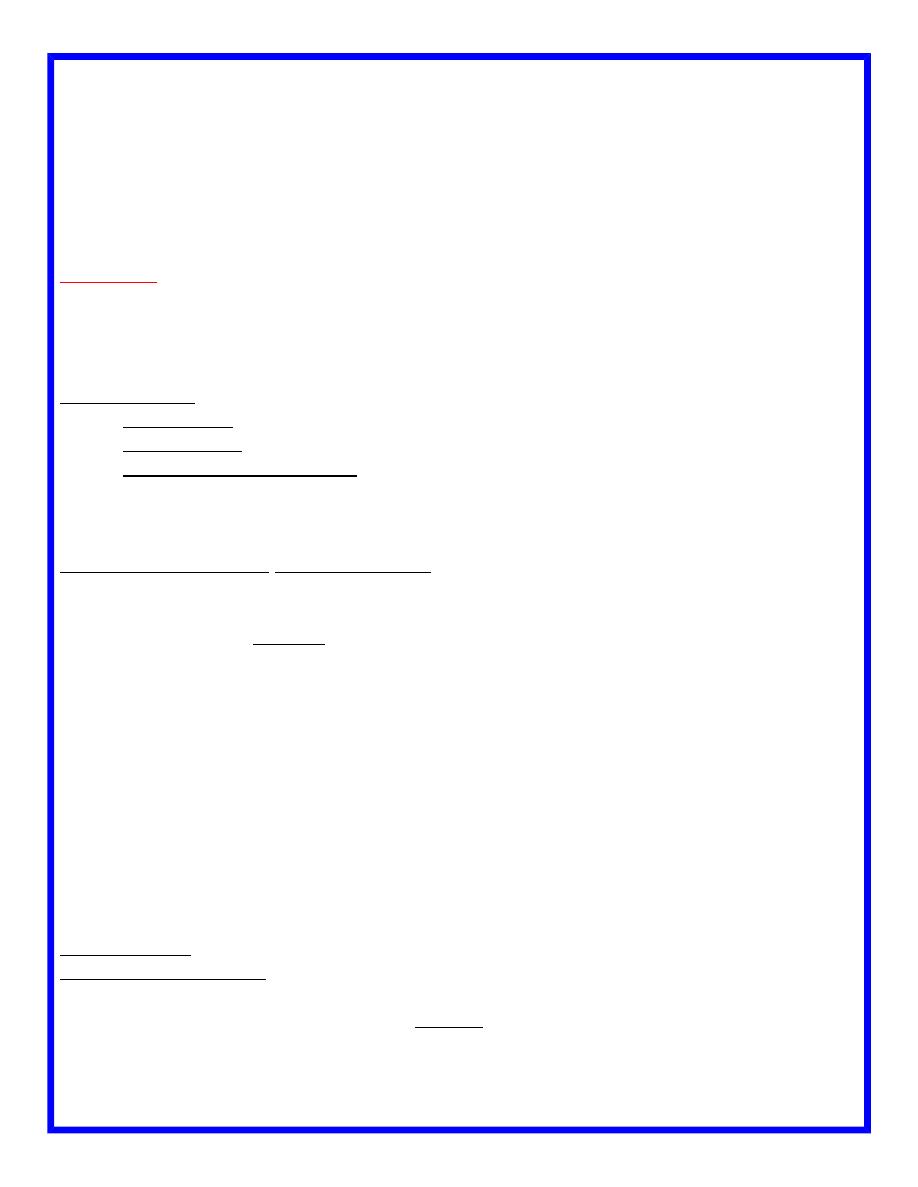
7
BENIGN;
Adenoma, Sub mucous Lipoma & Stromal cell tumors (Leiomyoma)
*
presentation
;-
1-Intestinal obstruction (intussusceptions)
2-gastrointestinal bleeding).
3-abdominal mass.
*Diagnosis;
1- small bowel barium examination ,
2- endoscopy and
3-surgery (explorative laparotomy).
Benign tumours and conditions that may be mistaken for cancer of the small bowel:
Hamartoma
Tuberculosis
Peutz-Jeghers syndrome
Peutz–Jeghers syndromfamilial intestinal hamartomatous polyposis
Autosomal dominant genetic disease occur in (1 in 25,000 to 300,000 births).
*affecting the jejunum causing (bleeding or intussusceptions). characterized by the
development of benign hamartomatous polyps in the gastrointestinal tract and
hyperpigmented macules on the lips and oral mucosa (melanosis of oral mucous
membrane and the lip (sine qua non)
Also melanin spots on the digits & perianal skin may be found.
Complication; -
1- intestinal bleeding,
2- intussusception with intestinal obstruction.
3- Malignant changes may occur.
Treatment
*surgery for complications like; bleeding, intussusception.
procedures;-(Enterotomoy, resection and colonoscopic snaring)..
Diagnosis
Family history .
Mucocutaneous lesions causing patches of hyper pigmentation in the mouth and on the
hands and feet. Intraorally, they are most frequently seen on the gingiva, hard
palate and inside of the cheek. The mucosa of the lower lip is almost invariably
involved as well.
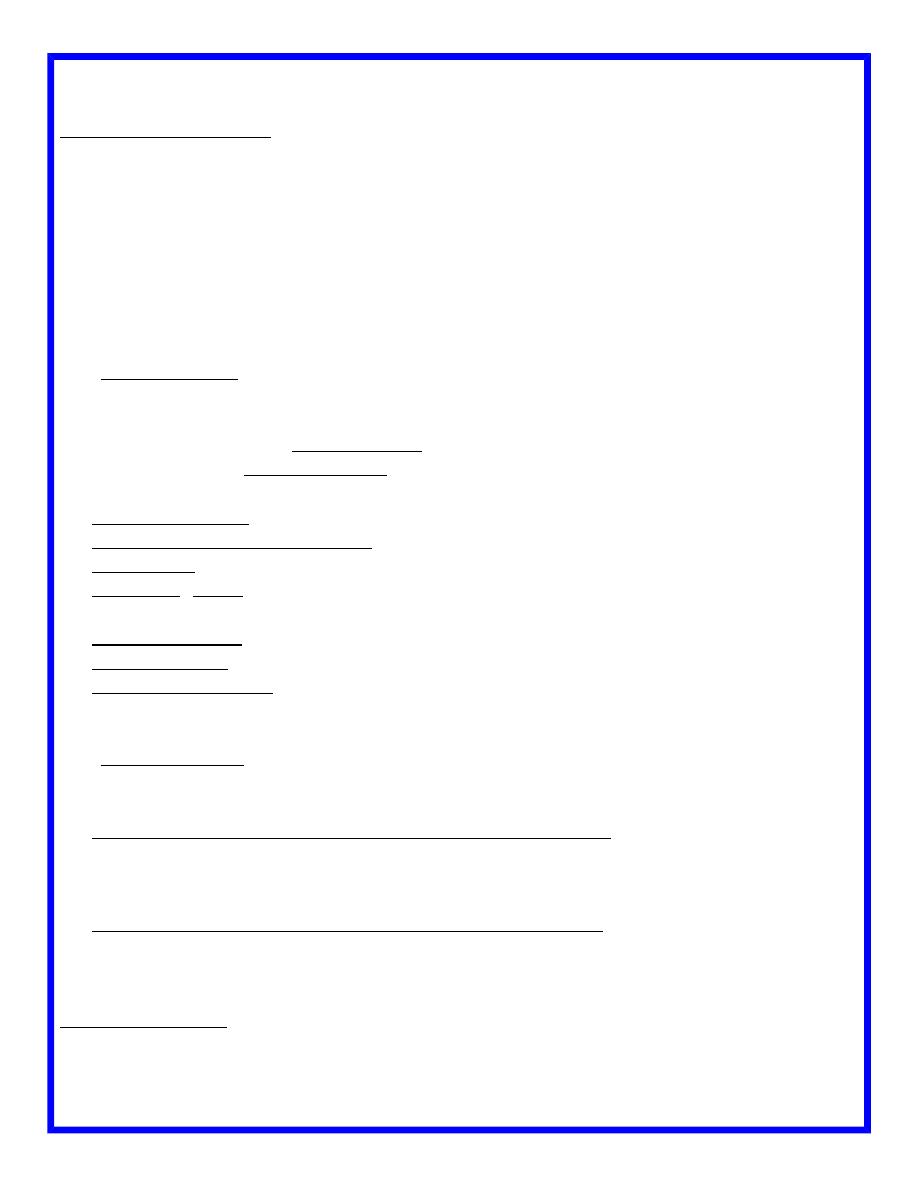
8
Hamartomatous polyps in the gastrointestinal tract. These are benign polyps with an
extraordinarily low potential for malignancy.
Most people with Peutz-Jeghers syndrome will have developed some form of neoplastic
disease by age 60.
Presentation
Patients with the syndrome have an increased risk of developing carcinomas of the
pancreas, liver, lungs, breast, ovaries, uterus, testicles and other organs.
The average age of first diagnosis is 23, but the lesions can be identified at birth by an
astute pediatrician. Prior to puberty, the mucocutaneous lesions can be found on the
palms and soles. Often the first presentation is as a bowel obstruction from an
intussusception which is a common cause of mortality; an intussusception is a
telescoping of one loop of bowel into another segment.
MALIGNANT Several different subtypes of small intestine cancer exist. Duodenal cancer has
more in common with stomach cancer, while cancer of the jejunum and ileum have more
in common with colorectal cancer.
These include:
Adenocarcinoma
Gastrointestinal stromal tumor
Lymphoma
Carcinoid (ileum)
Risk factors for small intestine cancer include:
Crohn's disease
Celiac disease
Radiation exposure
Hereditary GI cancer syndromes:
1-LYMPHOMA; three main types
A-western type; - (multiple annular ulcerating lesions)
Its non-Hodgkin B-cell lymphoma, present with intestinal
Obstruction, bleeding, perforation, anorexia and weight loss.
B-primary lymphoma associated with celiac disease; its usually of T-cell
type, present with diarrhea & pyrexia of unknown origin+ local obstruction
symptoms.
C-Mediterranean lymphoma; + alpha chain disease.
Treatment;- usually chemotherapy but surgery is indicated for
(complications).
2-CARCINOMA;-present with intestinal obstruction, bleeding or diarrhea.
Complete resection offers the only hope of cure.
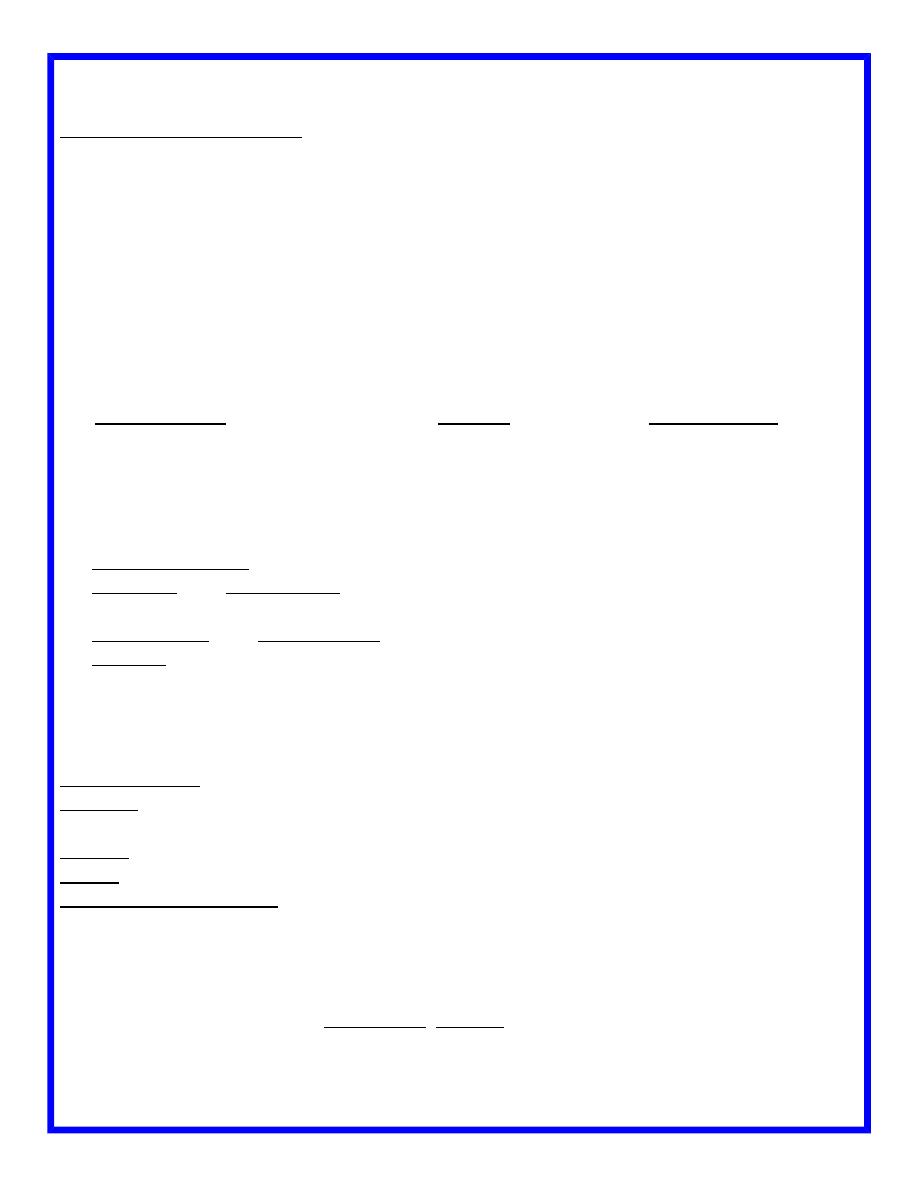
9
3-CARCINOID TUMOUR; occur in order (appendix ,ileum &rectum). it arise from
neuroendocrine cells at the base of intestinal crypts, small in size may secrete a
number of vosoactive peptides(5-HT"SEROTONIN" , it may metastasize to the liver
causing carcinoid syndrome (reddish-blue cyanosis, flushing attacks with alcohol
intake),diarrhea,borborygmi,asthmatic attacks and sometimes pulmonary &
tricuspid stenosis.
Treatment;
Medical =octeriotide (somatostatin analogue).
Surgical resection (appendectomy), partial hepatectomy in case of metastatic lesions.
Short bowel syndrome
is a malabsorption disorder caused by the surgical removal of the small intestine, or
rarely due to the complete dysfunction of a large segment of bowel. Most cases are
acquired, although some children are born with a congenital short bowel. It usually
does not develop unless a person has lost more than two thirds of their small
intestine.
Signs and symptoms
Abdominal pain
Diarrhea and steatorrhea (oily or sticky stool, which can be malodorous)
Fluid retention
Weight loss and malnutrition
Fatigue
Causes
Short bowel syndrome in adults is usually caused by surgery for:
Crohn's disease, an inflammatory disorder of the digestive tract
Volvulus, a spontaneous twisting of the small intestine that cuts off the blood supply and
leads to tissue death
Tumors of the small intestine
Injury or trauma to the small intestine
Necrotizing enterocolitis (premature newborn)
Bypass surgery to treat obesity, a now commonly performed surgical procedure
Surgery to remove diseases or damaged portion of the small intestine
Treatments
Anti-diarrheal medicine (e.g. loperamide, codeine)
Vitamin and mineral supplements
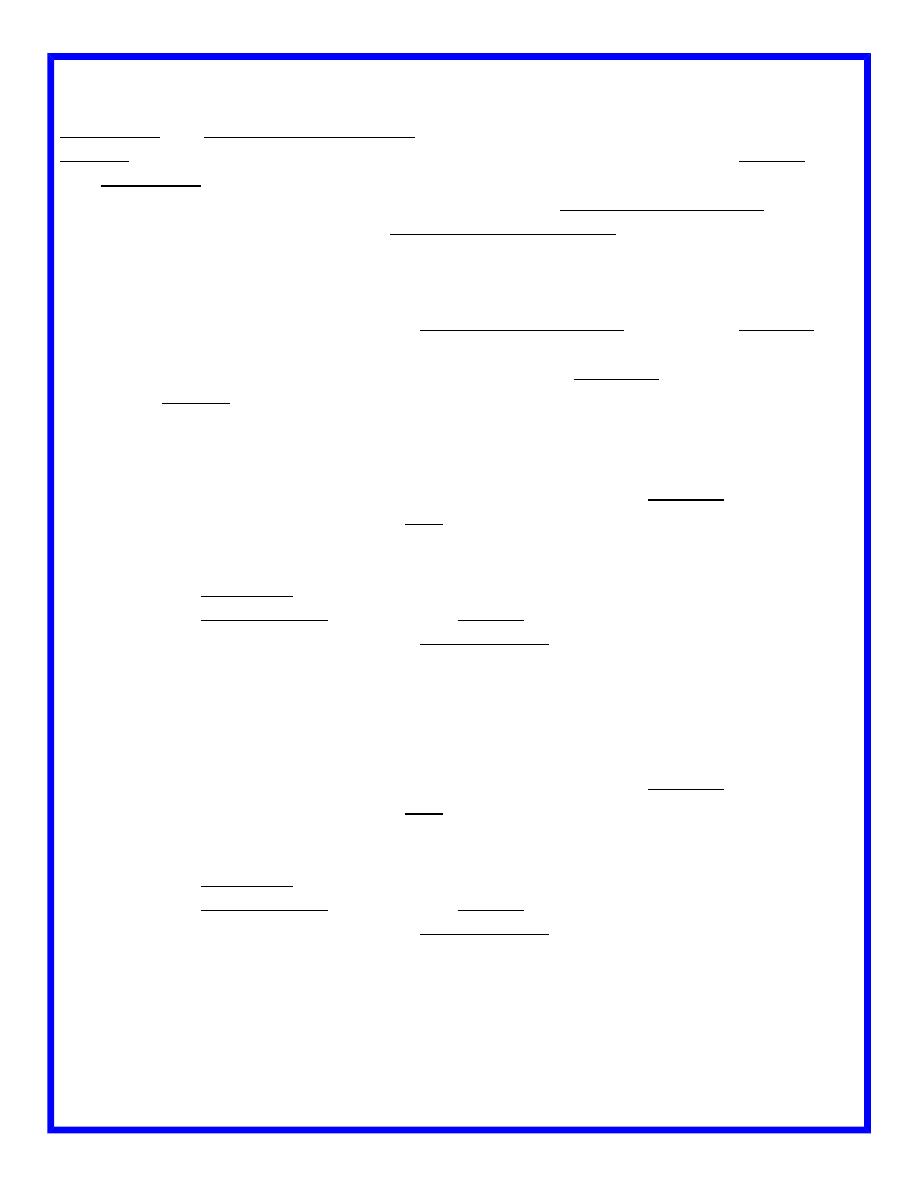
10
H2 blocker and proton pump inhibitors to reduce stomach acid
Lactase supplement (to improve the bloating and diarrhoea associated with lactose
intolerance)
Surgery, including intestinal lengthening, tapering, and small bowel transplant.
Parenteral nutrition (PN or TPN for total parenteral nutrition - nutrition administered
via intravenous line).
Bezoar
A bezoar is a mass found trapped in the gastrointestinal system (usually the stomach),
though it can occur in other locations.
There are several varieties of bezoar, some of which have inorganic constituents and
others organic. Types by content
Food boli (singular, bolus)
Pharmacobezoars (or medication bezoars) are mostly tablets or semi-liquid masses of
drugs.
Phytobezoars are composed of nondigestible plant material (e.g., cellulose)
Trichobezoar is a bezoar formed from hair . a very rare and extreme case, may require
surgery.
Types by location
A bezoar in the esophagus is common in young children.
A bezoar in the large intestine is known as a fecalith.
A trichobezoar in the trachea is called a tracheobezoar.
Types by content
Food boli (singular, bolus)
Pharmacobezoars (or medication bezoars) are mostly tablets or semi-liquid masses of
drugs.
Phytobezoars are composed of nondigestible plant material (e.g., cellulose)
Trichobezoar is a bezoar formed from hair . a very rare and extreme case, may require
surgery.
Types by location
A bezoar in the esophagus is common in young children.
A bezoar in the large intestine is known as a fecalith.
A trichobezoar in the trachea is called a tracheobezoar.

11
Second subject:
VASCULAR ANOMALIS “ANGIOD YSPLASIA”
* is a vascular malformation associated with aging (above 60
years).
*Capillary or cavernous haeangiomas can cause sudden massive
colonic bleeding in middle —aged or elderly patient.
*occur more in cecum and ascending colon.
*histology dilated, distorted, thin —walled vessels with only a scanty amount of muscle
in their walls.
DIAGNOSIS
*Colonoscopic examination—few mm.size lesions as reddish raised area in the sub
mucosa of the affected part of the colon.
*Angiography (selective SM or IM) = site & extent of the lesion by a blush.
*Radioactive Tc99-ladelled red cells may confirm and localize the source.
Treatment
=assessment with fluid and blood replacement…..
*colonoscopic diathermy for very small pointed areas.
*jf bleeding is brisk and the patient seriously ill ;-
emergency surgery in form of total abdominal colectomy and ileorectal anastomosis.
DIVER TICULAR DISEASE OF THE COLON
Acquired herniation of colonic mucosa, protruding through the circular muscle
Occur at the points where the blood vessels penetrate the colonic wall, it arises as a
result of muscular in coordination and spasm, resulting in increasing segmentation
and intraluminal pressures.
* Common in western countries (low roughage diet or low natural fiber),
* commonly found in the sigmoid colon ‘90%’, and almost always associated with
inflammation (diverticulitis). also it may occur in cecum and occasionally entire
colon may be involved.
*solitary diverticulum of the cecum & ascending colon is rare, usually congenital and
present as acute appendicitis
* In 5% of patients there is associated gall stones &hiatus hernia.
DIVERTICULITIS;
*It is an inflammation of one or more diverticula, usually with some
*it is a progressive condition (asymptomatic-symptomatica symptomatic---.
*it is not a precancerous condition, but cancer may coexist.
Complications;
1-recurrent inflammation.can be clinically silent).

12
2-perforation (peritonitis and pericolic abscess).
3-intestinal obstruction (progressive fibrosis=stenosis or pericolitis causing small
intestinal adhesion----).
4-haemorrhage may require blood transfusion.
5-fistnlae formation (vesicocolic, vagino colic, enterocolic &colocutaneons).
Clinical features;
*asymptomatic
*abdominal distention, heaviness & flatulence..
*pain in the left iliac fossa (sub clinical inflammation).
*fever, malaise &leucocytosis , if diverticulitis .
*constipation or passing of loose stool.
* thickened sigmoid by exam,.palpable tender mass in left iliac fossa.
* Rectal examination may tender mass.
*urinary symptoms (pneumaturia= flatus in the urine) caused by vesicocolic fistula
Diagnosis; - usually by exclusion like IBS--Radiology;*plain abdomin= perforation
(peritonitis) ,gas in the bladder
* Barium enema & water soluble contrast saw-tooth appearance & strictures. Also to
exclude cancer and to asses the extent of the disease--
*CT scan for those with abscess formation and masses….
*cystoscopy for pneumaturia and urinary complications.
* Flexible sigmoidoscopy & colonoscopy show inflamed mucosa (biopsy) & to exclude
other diseases (carcinoma).
Management;
high residue diet (whole meal bread, flour, fruit & vegetables).
*acute diverticulitis =bed rest, i.v. fluid & antibiotics.
*operative procedures for diverticular disease in about 10% usually for the complication
& those with recurrent attacks;
In acute presentation with perforation or peritonitis =emergency laparotomy in form of;-
A) Primary resection +Hartmann’s procedure.
B) Primary resection + anastomosis after on-table lavage in selected cases.
C) Excoriation of the affected bowel which is then opened as colostomy.
D) Suturing the perforation with proximal defunctioning colostomy if (minimal soiling).
*in case of fistulae = resection of the diseased bowel with defunction colostomy.
*if sever hemorrhage= resection? Exclude angiodysplasia
ULCERATIVE COLITIS
Ulcerative colitis is a disease that causes inflammation and sores (ulcers) in the lining of the
large intestine, or colon. It usually affects the lower section (sigmoid colon) and the

13
rectum. But it can affect the entire colon. Ulcerative colitis can affect people of any age,
but most people who have it are diagnosed before the age of 30.
Etiology;-unknown? But, three hypotheses;
1-mucosal immunological reaction.
2-weakened mucous barrier.
3-defective mucosal metabolism of butyrate’s.
Pathology;
*Nonspecific inflammatory disease, primarily affecting the mucosa & superficial sub
mucosa & only in sever disease the deeper layer of the intestinal wall affected.
*In 95% the disease starts in the rectum and spread proximally.
* When ileocecal valve is incompetent, retrograde ileitis (involvement of the last 30 cm of
the ileum called “backwash” ileitis).
* acute form ;-multiple minute ulcerations, in chronic cases inflammatory polyps occur
“pseudo polyps” which may be numerous.
in acute sever cases acute colonic dilatation of the” transverse” called (toxic mega colon)
which may perforate.
*there is increase in the inflammatory cell, depletion of goblet cells, crypt abscess
formation.
*chronic cases lead to sever dysplasia or carcinoma in situ?
CLINICAL FEATURES;
presentation ;-It can be mild, moderate or sever according to the numbers of bowel
motion & signs of systemic illness (fever, tachycardia….
The main symptoms are:
1-Abdominal pain or cramps.
2-watery or Bloody diarrhea or an urgent need to have a bowel movement.
3-rectal discharge of mucous (blood stained or purulent).
4-proctitis; 25% (tenesmus, urgency & semiformal stool).
5-left-sided & total colitis=bloody diarrhea upto2O%/ day+ dehydration, anemia &
hypoproteinemia
6-Some people also may have a fever, may not feel hungry, and may lose weight. In
severe cases, people may have diarrhea 10 to 20 times a day.
7-Ulcerative colitis can also cause other problems, such as joint pain, eye problems, or
liver disease. But these symptoms are more common in people who have Crohn’s
disease.
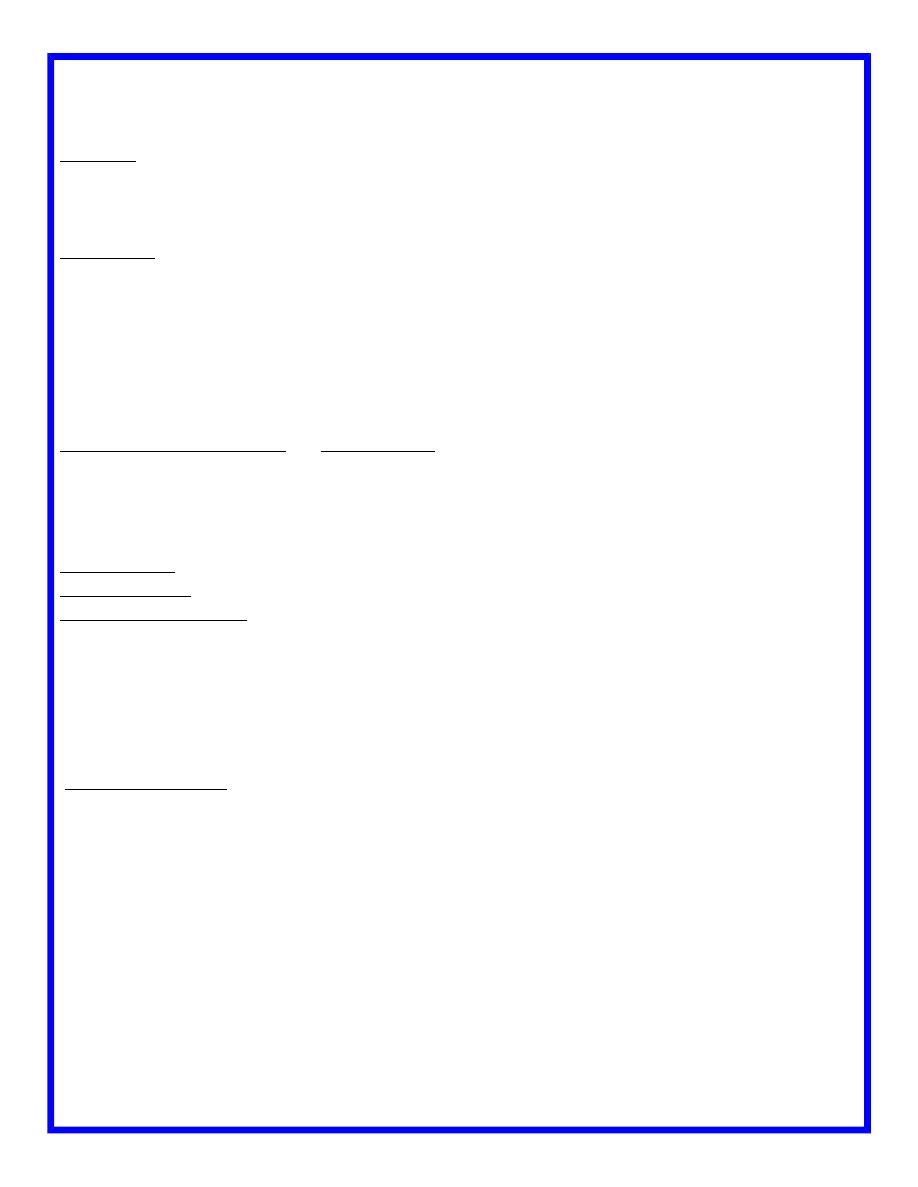
14
COMPLICATIONS OF ULCERATIVE COLITIS
ACUTE;
1- Fulminating colitis & toxic dilatation”megacolon”.
2- Perforation & peritonitis.
3-Intestinal Hemorrhage.
CHRONIC
1-Cancer (after 20 years= 12% risk).
2-Extraintestinal manifestations.
*skin;- erythema nodosum, pyoderma gangrenosum & aphthous ulceration.
*joints;- arthritis, sacroilitis & ankylosing spondylitis.
* Liver;- sclerosing cholangitis & bile duct cancer,
*Eyert ;- iritis.
Differential diagnosis
irritable bowel syndrome, or diverticulitis.
INVESTIGATIONS;-To diagnose ulcerative colitis, doctors ask about
the symptoms, do
a physical exam, and do a number of tests.
1-Blood tests, look for anemia, infection or inflammation.
2-Stool sample testing to look for blood, infection, and white blood cells.
3-RADIOLOGICAL
*plain x-ray;- perforation & colonic dilatation (6cm and more).
* Barium enema= water-soluble medium may show ;-
1-loss of haustration (distal colon).
2- Mucosal changes (granularity).
3-Pseudopolyps formation.
4) 4-Narrow contracted colon” lead-pipe”.
4-- ENDOSCOPY
*Sigmoidoscopy;-normal if mild, proctitis (hyperemia + bleed on touch , pils-like
exudates and tiny ulcers).
Colonoscopy done for followings;
* To establish the extent of inflammation.
* Distinguish with CD,….???
*Monitor response to treatment.
* Assess longstanding cases for malignant changes.
TREATMENT
1-MEDICAL= steroid for acute disease & 5-ASA ,mesalazine or olsalazine for maintain

15
remission ;-
*mild case; oral prednisolone;
20-4Omg/d for wk+ 5-ASA 1g x3.
*moderate ;oral prednisolone ;
4Omg/d+ twice daily steroid +5-ASA.
*sever;- admission to hospital;- (bed rest ,iv fluid .correction of anemia & electrolytes,
protein), frequent abdominal examinations for signs of perforations & peritonitis
*Hydrocortisone iv 100-200mg x 4/ d.
* Rectal prednisolone enema.
* Immunosuppression; Azothioprime or Cyclosporine?
2-SURGICAL INDICATIONS=Surgery is rarely done for mild ulcerative colitis. Many
people who have mild colitis have only occasional symptoms that they can control
with antidiarrheal medication.
The only cure for ulcerative colitis is surgery to remove the colon and the lining of the
rectum. This surgery removes any tissue in which ulcerative colitis could return. But
this surgery may not cure complications from the disease. In many cases, it also
requires that you have an ostomy (an opening in the abdominal wall).
Removal of the colon and rectal lining eliminates the risk of colon cancer. The risk of
colon cancer is higher than average for people who have had ulcerative colitis for 8
years or longer.
Surgery carries a significant risk of complications, including obstruction of the small
intestine and leakage of stool from the area where the small intestine is attached to
the rectum or anus during surgery. If stool leaks into your body from this
connection, it can cause a severe infection.
Surgery may be needed if abnormal cells are found during biopsy.
complications =
* Sever or fulminating colitis not responde to medical treatment.
*Chronic disease with anemia , tenesmus….
*Steroid —dependent disease (side-effect...
* Risk of neoplastic changes” sever dysplasia”.
*Extra intestinal manifestations.
* Rarely sever bleeding , intestinal obstruction..
TYPES OF SURGERY IN UC
1- Emergency (perforation…….the operation will be;-
*total abdominal colectomy &Prctocolectomy with perminent ileostomy.
2-Elective operations;

16
1-Restorative Prctocolectomy with ileoanal pouch’Park’s
(temporary ileostomy).
2--Colectomy with ileorectal anastomosis (minimal rectal
involved).
3--Ileostomy with continent intraabdominal pouch (Kock’s) procedure.
Intestinal Polyps
Intestinal polyps are small, mushroom-like abnormalities of the intestine that may have a
stalk or be flat with a stalk. They can vary from under 2 millimeters (less than 1/10
of an inch) to over 2 inches in diameter. Certain sporadic (not inherited) intestinal
polyps are a risk factor for colorectal cancer. These polyps - chiefly those classified
as adenomas (growths with gland-like characteristics) - are benign, but they may
become cancerous, particularly if they grow larger than an inch in diameter.
In most cases, colorectal polyps do not cause symptoms; however, they can cause
intermittent bleeding or the passage of mucus with bowel movements. If they are
large, they can obstruct the passage of waste material.
Causes of Intestinal Polyps
Family History: Siblings and parents of patients with colon polyps are at increased risk
for colon cancer, particularly when the polyp is diagnosed before the age of 60 or - in
the case of siblings - when a parent has had colon cancer.
Diet: About 90 % of all colon cancers arise from polyps in the colon. In general, most
physicians encourage people to eat a low-fat, high-fiber diet, to eat more fruits,
vegetables, chicken and fish, and to eat less red meat.
Smoking: Smoking may also be a risk factor for colon cancer.
Obesity: higher body mass was positively associated with an increased risk of adenomas
leading to colon cancer .
Classification of polyps
1-inflammatory.
2-metaplastic or hyperplastic.
3-hamartomatous;-peutz-jeghers/juevenile.
4-neoplastic;-*adenoma(tubular,villous,tubulovillous).
*adenocarcinoma.
*carcinoid
Symptoms of Intestinal Polyps
1--Many polyps are asymptomatic; the larger the lesion, the more likely it is to cause
symptoms.
2- Rectal bleeding is by far the most frequent complaint. Blood is bright red or dark red,
depending on the location of the polyp, and bleeding is usually intermittent.

17
3-Some polyps, notably large villous adenomas, may secrete copious amounts of mucus
that are released through the rectum and may cause hypokalemia.
Adenomas account for about 70 %of all colorectal polyps removed as part of
colonoscopic examination. They arise most often in the rectum and sigmoid colon.
Adenomas are described as pedunculated when they grow on a stalk that connects the
head of the polyp to the bowel wall. Flatter polyps that grow directly on the wall of
the bowel are called sessile.
About 85 % are tubular (growing in tube-like patterns)
5 % are villous (forming finger-like projections, or fronds); and
10 % are tubulovillous (intermediate structures that contain both growth patterns).
These polyps differ in their structure, texture, and microscopic characteristics; they also
differ in their potential for cancerous change.
Invasive cancer develops in roughly 5 % of all tubular (also called adenomatous) polyps.
Villous polyps are less common, but about 40 % of them become cancerous. Cancer
develops in about 22 % of all tubulo-villous polyps.
The most common colorectal types, called hyperplastic polyps or hyperplastic mucosal
tags, are harmless.
many cancers of the large bowel arise from polyps. Thus removing these growths
(polypectomy), often through a sigmoidoscope or colonoscope, is one way to prevent
colorectal cancer. Because new polyps develop in nearly half of all patients who have
had such growths removed, careful follow-up is necessary.
Diagnosis of Intestinal Polyps
When a person's symptoms suggest there might be pre-cancerous or cancerous growths
in the colon or rectum, the doctor will ask about the patient's medical history and
then will conduct a complete exam.
checking the general signs of health (temperature, pulse and blood pressure).
investigations;-
1-rectal exam, gloved finger into the rectum to gently feels for any bumps.
2-The fecal occult blood test is done on a stool sample to find if there is blood in the stool.
3- flexible Sigmoidoscopy to look at the rectum and the lower end of the colon.
4- colonoscopy enables the doctor to see the entire length of the colon. If a polyp is found,
the examinar will remove a tissue (biopsy) for examination at a lab.
Treatment for Intestinal Polyps
Polyps of the colon and rectum are treated because they produce symptoms, because they may
be malignant when first discovered, or because they may become malignant later.

18
Small polyps can be removed with an electrocautery snare passed through a rigid or flexible
sigmoidoscope, but since total colonoscopy is recommended in all patients who have a
polyp, it is best to wait and do the polypectomy in a well-prepared colon during that
procedure.
Large, sessile, soft, velvety lesions in the rectum are usually villous adenomas and these
tumors have a high malignant potential and must be excised completely. Pedunculated
polyps and small sessile lesions in the sigmoid and above should be removed with biopsy
forceps or an electrocautery snare passed through the colonoscope.
Depending on your medical history, age and risk factors, your physician will recommend how
often to screen for colon cancer, including how often you should perform the fecal occult
blood test and how frequently you should have a flexible sigmoidoscopy, colonoscopy, or
other tests performed.
Differences between UC and CD
■ UC affects the colon; CD can affect any part of the gastrointestinal tract, but particularly the
small and large bowel
■ UC is a mucosal disease whereas CD affects the full thickness of the bowel wall
■ UC produces confluent disease in the colon and rectum whereas CD is characterised by skip
lesions
■ CD more commonly causes stricturing and fistulation
■ Granulomas may be found on histology in CD but not in UC
■ CD is often associated with perianal disease whereas this is unusual in UC
■ CD affecting the terminal ileum may produce symptoms mimicking appendicitis, but this
does not occur in UC
■ Resection of the colon and rectum cures the patient with UC, whereas recurrence is common
after resection in CD
Diaa
